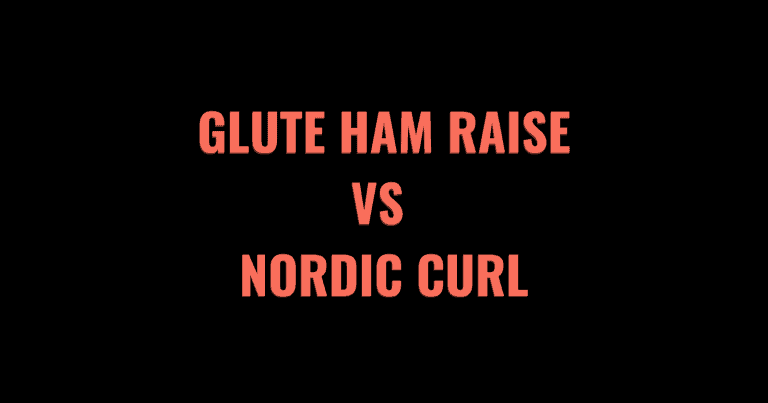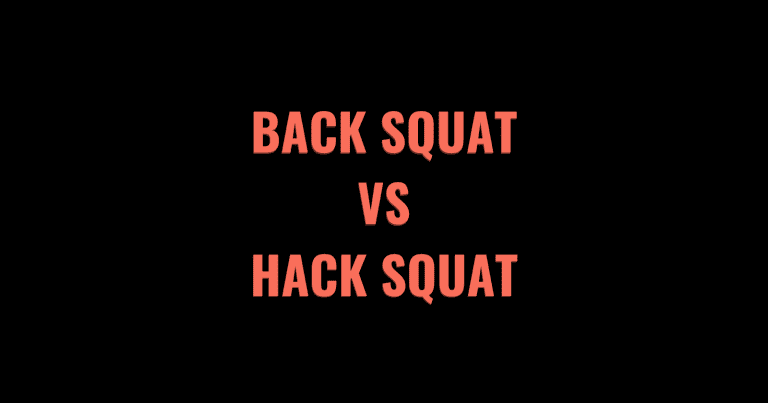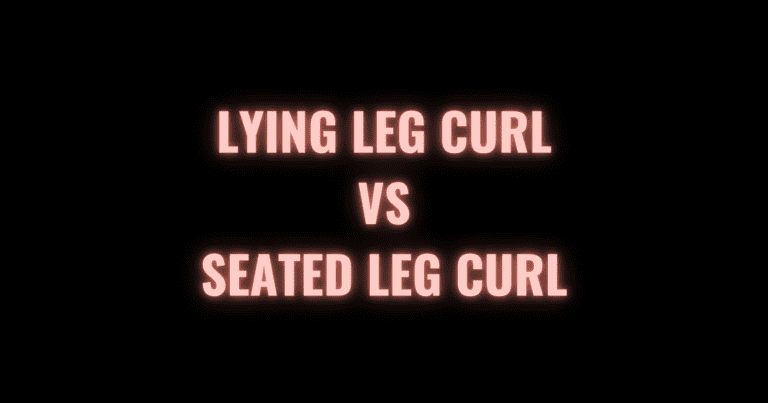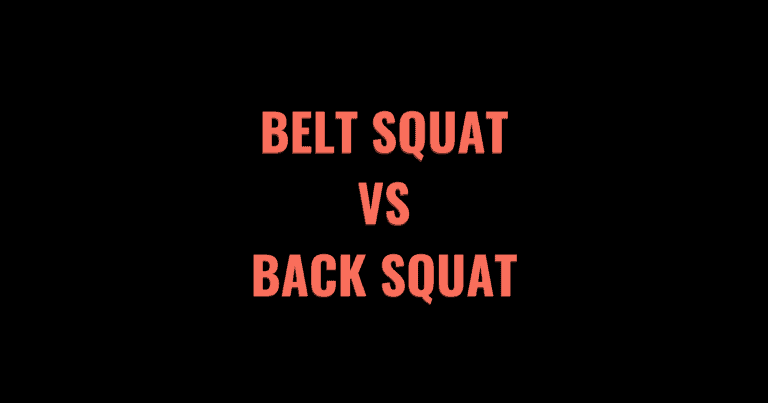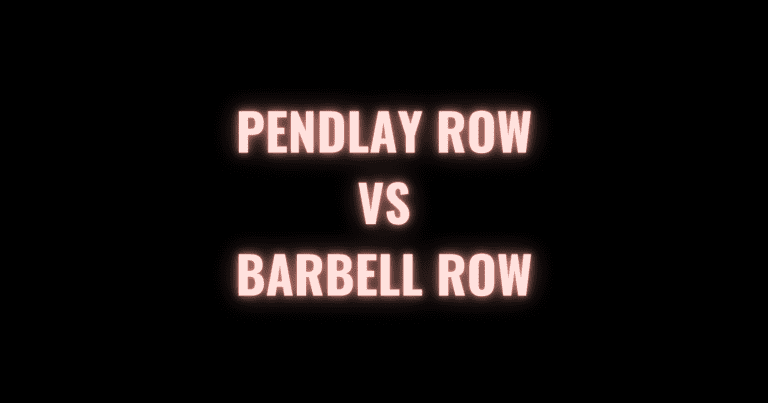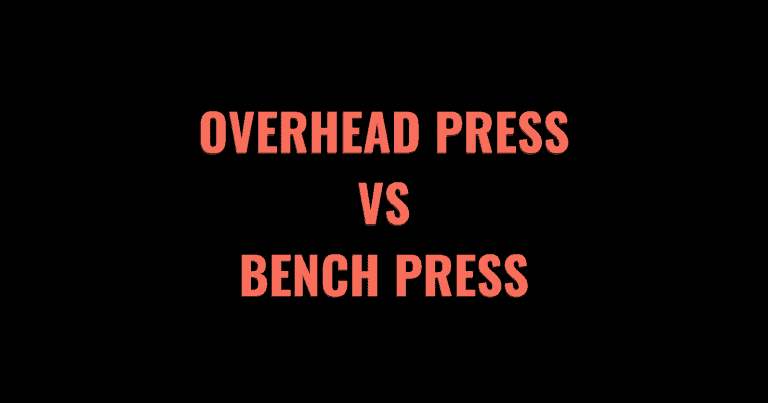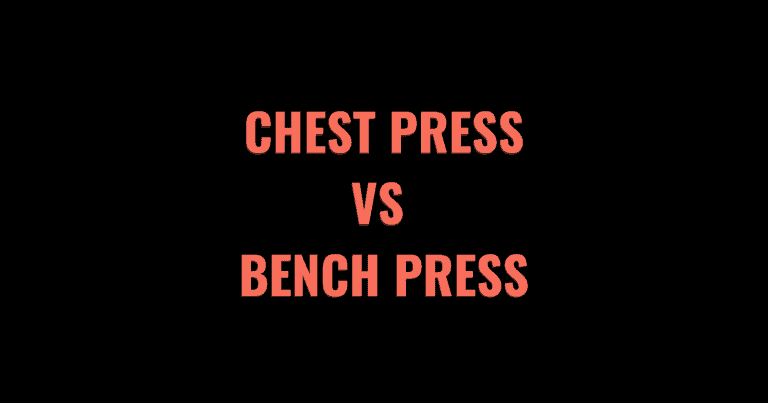Are you looking for an effective lower body exercise to build size and muscle mass?
Do you want to even out muscle imbalances between your right and left leg, but aren’t sure how?
Are you wondering whether the split squat or the lunge is best for your goals, or unsure of the difference between the two?
We’ll compare these two lower body exercises, go over the key differences and help you determine which to include in your leg day program for maximum results.
Table of Contents
- 1 Split Squat vs. Lunge
- 2 Split Squat vs. Lunge: Pros and Cons
- 3 Split Squat vs. Lunge – When to do an exercise
- 4 Split Squat vs. Lunge – Muscles Used
- 5 Form Differences
- 6 Helpful Form Cues
- 7 Common Form Mistakes
- 8 Frequently Asked Questions about Split Squats and Lunges
- 9 Other Exercise Comparison Posts
- 9.1 EZ Curl vs Straight Bar Curls: Differences, Pros, and Cons
- 9.2 Glute Ham Raise vs Nordic Curl: Differences and Benefits
- 9.3 Hack Squats vs. Back Squats: Pros and Cons
- 9.4 Rack Pulls vs. Deadlifts: Differences, Pros, and Cons
- 9.5 Lying Leg Curl vs Seated Leg Curl: Pros & Cons
- 9.6 Belt Squat vs. Back Squat: Pros & Cons
- 9.7 Preacher Curl vs Concentration Curl: Which is Better?
- 9.8 Tricep Extension vs Skull Crusher: Pros and Cons
- 9.9 Pendlay Row vs Barbell Row: Differences and Benefits
- 9.10 Overhead Press vs. Bench Press: Pros, Cons, & Differences
- 9.11 Bench Press vs Chest Press: Pros and Cons
- 9.12 Floor Press vs. Bench Press: Pros, Cons, and Differences
Split Squat vs. Lunge
The split squat and the lunge are effective at building the strength and size of your lower body muscles. Split squats and lunges target similar muscle groups (primarily the glutes and quadriceps) and are considered unilateral (one-sided) movements, which can help address muscle imbalances.
What is the main difference between a split squat and a lunge?
The main difference between a split squat and a lunge is foot movement. In a split squat, your feet remain in a static position for the entire set. In a lunge, you begin with the feet together and step forward, backward, sideways, or diagonally to complete each rep.
This is summarized nicely in this video from Bar Bend.
Split Squat vs. Lunge: Pros and Cons
The split squat and the lunge are both effective at addressing muscle imbalances by working one leg at a time. They also have lots of variations to help you target the lower body muscles in different ways. The two exercises have unique pros and cons which may help you determine which one best meets your needs.
Split Squat Benefits
Here are some of the advantages of split squats.
- Easier to overload. The static foot positioning of a split squat means they can handle progressive overload better and more safely than a lunge. This may make this exercise preferable for bodybuilders and those wishing to maximise hypertrophy.
- Stable and safe. Split squats require less coordination and stabilisation than the lunge, as the feet don’t have to move until the end of the set. This may make them a better unilateral exercise for beginners or people with balance or coordination challenges.
- Easier to generate power. By keeping a static foot position, you will be able to generate more explosive power by driving more weight through your working leg. This can translate to sports performance by targeting fast-twitch muscle engagement.
Split Squat Drawbacks
Here are some of the drawbacks of split squats.
- Less range of motion. The split squat can be performed with both feet at ground level, or with the back foot elevated on a bench or box. Either way, the range of motion is usually less than in a dynamic lunge.
- Risk of hip hyperextension. Some lifters may keep their rear leg too straight during a split squat. This can cause the hip to overextend, especially when doing a variation that elevates the back foot (e.g. the Bulgarian split squat). This can place strain on the joints and potentially lead to injury.
Lunge Benefits
Here are some of the advantages of lunges.
- Helps build coordination and balance. In a lunge, you are constantly shifting and balancing the weight in different positions as you step forward, back or sideways for each rep. This can help you strengthen your stabilization muscles, increase coordination and muscle proprioception.
- Increases muscular endurance. Stepping out into your lunge stance for each rep will engage more muscles and require them to work for longer. Lunges are usually done at a lighter weight than a split squat, which also increases how many reps you can do per set to build endurance.
- Increases the heart rate. Moving your body more in a dynamic lunge will mean your cardiovascular system has to work harder than in a static movement. This gives you the dual benefit of strength and aerobic stimulus in one exercise.
Lunge Drawbacks:
Here are some of the drawbacks of lunges.
- Risk of incorrect foot placement. Lunges require you to step into the staggered position for each rep. This increases the likelihood that your stance will become too wide or too narrow, especially as you start to fatigue throughout your set. Incorrect foot placement can lead to the knees tracking over the toes which can pose a risk of injury.
- Requires better balance. Lunges can be an effective way to improve your balance over time, however, for some lifters they may be too challenging. Losing your balance during a set of lunges can hinder your workout or pose an injury risk.
Split Squat vs. Lunge – When to do an exercise
When to do a split squat
If you want to generate maximum power in a unilateral lower body exercise, the split squat may be a better choice. You are more likely to fatigue the muscles and target endurance (slow-twitch muscles) in a lunge due to the dynamic nature and greater range of motion. The split squat allows you to explosively drive heavier weights through your working leg.
The split squat may have an advantage over the lunge when it comes to building muscle mass. Because your feet are in a static position, it is easier to overload the working leg with heavier weights and stimulate hypertrophy.
When to do a lunge
If you want to improve your balance, coordination and stability, the lunge is a great choice for you. Dynamic lunges can help you develop better spatial awareness of your joints and muscles, helping to improve your functional fitness for everyday activities.
The lunge may be a better choice for you if you want to increase your lower body muscular endurance. Lunges can typically handle a higher volume, making them a good choice for runners or other endurance athletes wanting to develop the work capacity of their legs.
Split Squat vs. Lunge – Muscles Used
The split squat and the lunge both target the following key muscles of the lower body:
- Quadriceps
- Hamstrings
- Gluteus maximus
- Adductors
- Abductors
Split squats and lunges also target the stabilizing muscles in the hip and core to a lesser extent.
Split Squat Muscles Used
The split squat primarily targets the muscles in the front leg, whilst the back leg acts as more of a stabilizing anchor for the body. You can alter which muscles are engaged slightly by shifting your weight forward or back or adjusting your pelvic tilt. Split squats are particularly good at targeting the quads of the front leg when both feet are on the ground. In a rear leg elevated split squat (RLESS) there is greater activation of the quadriceps. Split squats with an elevated rear foot are also particularly effective at engaging the biceps femoris in the thighs.
Lunge Muscles Used
Lunges can be performed by stepping out sideways as well as forward or back. Lunges target the same lower body muscle groups as the split squat, but this can change depending on the variation and setup. Forward lunges place more strain on the quadriceps of the front leg, whilst a rear lunge is more effective at recruiting the hamstrings and glutes. Lateral lunges will create a greater load on the adductors and abductors in your thighs.
Form Differences
The primary difference between a split squat and a lunge is whether the feet move for each rep. Both the split squat and the lunge have multiple variations to choose from depending on your goals, abilities and the equipment available to you.
For a clear comparison, we’ll go over the correct form for a forward lunge and a standard split squat without elevating the back foot.
How to do a split squat with proper form
- If you are using weight for the exercise, prepare for the movement by loading a barbell across your shoulders or holding dumbbells or kettlebells at your sides.
- Stand with your feet together, your back straight and your gaze looking forward.
- Stagger your stance by taking a big step forward, keeping your toes in line with your knees.
- Brace your abdominals and bend at the knees to lower your body towards the ground. Stop descending when your back knee is close to the ground but your front knee is still behind your toes.
- Keep your feet where they are and push through the back foot to lift yourself back up to your starting position.
- Pause without moving the feet, before lowering again.
- Repeat for the desired number of reps. Reset by stepping your feet back together and then repeat on the opposite leg.
For a visual aid, check out this video from the University of Bristol demonstrating the correct form for a standard split squat.
How to do a lunge with proper form
- Load the movement with your barbell, dumbbells, or other weights if using them.
- Stand tall with your feet together and your eyes looking straight ahead.
- Take a big step forward into a staggered stance.
- Bend your knees and lower your body straight down until your back knee hovers about an inch from the ground.
- Push through the midfoot of the front leg to come back up and step your feet back together to their starting position.
- Repeat for the desired number of reps. You can do lunges one leg at a time like the split squat, or target both legs in one set by alternating legs for each rep.
Check out this helpful video from Built Lean for a visual guide to doing lunges with the correct form.
Helpful Form Cues
Split squat form cues
- Keep knees in line with toes. Make sure the knees don’t cave in or splay out, and ensure they do not travel over the toes to ensure proper form and avoid injury.
- Be conscious of your torso position. Leaning too far forward in a split squat can put excessive strain on the joints, whilst leaning back can hinder range of motion. Hinge slightly at the hips and think about sending your torso straight downwards rather than rocking forward or back.
- Start with your weaker leg first. It is a good idea to start single-leg exercises on your weaker leg, and then match the volume and intensity on your stronger leg. This helps ensure the exercise is improving muscle imbalances rather than exacerbating them.
Lunge form cues
- Be precise with your stance length. Maintain a consistent stride length with each rep to ensure an even stimulus in both legs. If you are a beginner, it can be helpful to mark the ground with chalk or small plates to give you a visual guide of how far forward to step.
- Keep your back upright throughout. Resist the temptation to start rocking your torso forward or backwards as you step into the lunge. Keep your core braced and your stance at an appropriate width for your body, so that you can send your weight straight down in a vertical movement path.
- Slightly tuck the pelvis. Keep the hips neutral with a slight posterior tilt to avoid arching your back when performing a lunge. This can help you to avoid straining the spine and ensure your legs are doing most of the work.
Common Form Mistakes
Split squat form mistakes
- Feet not properly spaced. Your feet should remain parallel and about hip-width distance. Be careful not to have one foot directly behind the other. Think of your feet as being on two hip-width train tracks, rather than on a single tightrope.
- Overloading the rear leg. The majority of the load in a split squat should be felt in the front leg. If your back leg is working too hard, you may need to adjust your stance.
- Coming up onto the toes. If you feel yourself coming up onto the ball of the foot in your front leg, your stance may be too narrow. Reset and try shifting your front foot a little further in front of you.
Lunge form mistakes
- Knees moving in front of toes. If your stance is too narrow, your knees may start to travel in front of your toes. This can cause unwanted strain on the knees and make the movement uncomfortable. Aim for about a 90-degree angle in both knees at the bottom of a lunge to keep the knees in a safe position.
- Walking on a tightrope. As with the split squat, keeping the feet in line with each other hinders the stability of the movement. Think about keeping your feet hip-width apart, even when in a staggered position to avoid losing your balance.
- Only bending the front knee. Be careful not to sink into the front knee whilst keeping the back leg straight. This can cause the back to arch and place too much pressure on the joints of the front leg.
Frequently Asked Questions about Split Squats and Lunges
A split squat is essentially a lunge in which the feet do not move. In a lunge, the feet step out into a staggered position for each rep. In a split squat, the feet remain static as the legs lower and lift the weight.
A Bulgarian split squat is a variation of the standard split squat in which you elevate the rear foot on a bench or other surface. Also known as the rear-foot elevated split squat or the bench split squat, this variation can help to increase the range of motion and recruit more muscles of the lower body.
Split squats may have advantages for triggering explosive power and strength over lunges. Lunges may be a better choice for those wanting to improve muscular endurance or work on their coordination and balance.
Other Exercise Comparison Posts
If you enjoyed this post, check out our comparisons of other popular exercises below.

